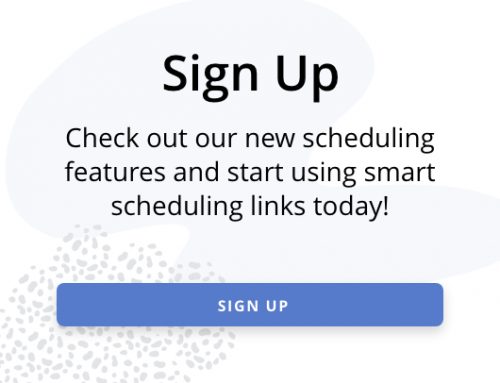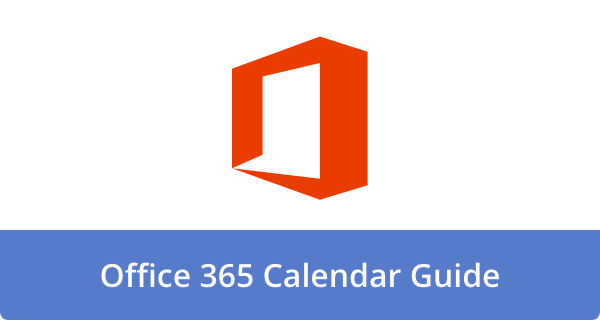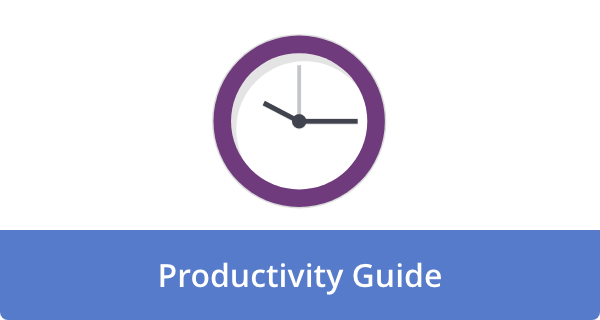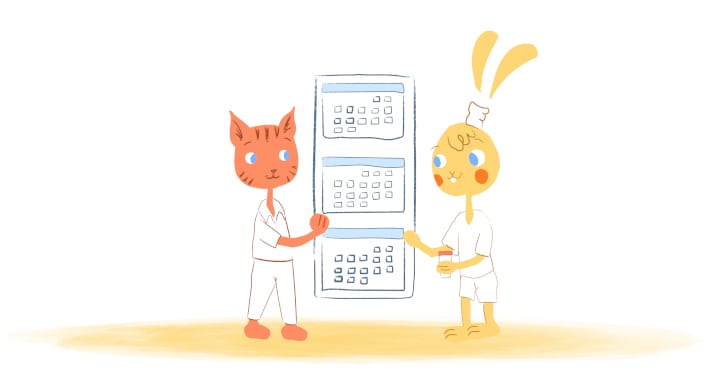

Can you imagine a world where tedious administrative chores vanish, information flows seamlessly between your favorite tools, and you reclaim precious time? This is not science fiction. It’s the tangible reality of AI-powered automation platforms. 92% of executives agree that their organizations will use AI-enabled automation by 2025, according to the IBM Institute for Business Value.
As such, this post will demystify AI workflows and give you the knowledge you need to build your own productivity powerhouse. By doing so, you can focus on what matters and unlock a new level of efficiency.
Decoding AI Workflows: Your Intelligent Automated Allies
What exactly is AI workflow automation?
By leveraging the power of artificial intelligence, AI workflow automation streamlines business processes and tasks across various digital systems and departments. AI-driven automation learns as opposed to traditional automation, which operates on rigid, predefined rules (“if this, then that”). Through observing patterns, understanding context, and making informed decisions across various platforms, it takes appropriate actions without constant human input.
Conventional automation involves arranging dominoes to fall in a specific order. With AI automation, dominoes can be arranged correctly, obstacles can be adjusted, a path can be learned, and even pushed if necessary.
Imagine that a new team member joins your organization. In a traditional setup, HR and IT teams would handle various internal tasks manually: provisioning software licenses, creating login credentials, updating HR platforms, and CRMs. This process is time-consuming and error-prone.
Using AI workflow automation, though, visualize this process. Whenever a new hire’s information is entered in a central system, an AI-driven workflow begins. With just a click of your mouse, it automatically communicates with your software providers, assigns licenses, generates secure login details, and updates all relevant databases—all without any manual input. By automating end-to-end, we free up valuable resources for more strategic initiatives.
How the Magic Happens: The Technologies Behind AI Workflows
AI workflow automation requires several sophisticated technologies to work in concert;
- Machine Learning (ML). By learning from historical data, AI systems can progressively improve their performance. ML models can automatically identify workflow patterns, predict bottlenecks, and suggest improvements, all in the background.
- Natural Language Processing (NLP). With NLP, automation software can understand human language, bridging the communication gap between humans and machines. If your automation tool could intelligently interpret your request and do what you asked, you could simply tell it to “schedule a follow-up meeting with John regarding the proposal.”. Doing so will allow you to interact with your automation tool more intuitively and efficiently.
- Robotic Process Automation (RPA) Enhanced by AI. Think of RPA as a digital assistant that can mimic human clicks and data entry across different applications. By integrating AI with RPA, its capabilities are enhanced. An AI-powered RPA system can handle exceptions, adapt to complex situations, and even make intelligent decisions when unexpected circumstances arise.
- Advanced Analytics and Predictive Algorithms. These advanced tools can proactively identify potential snags or inefficiencies in your workflow. With real-time data analytics, they can predict bottlenecks before they occur, providing recommendations on optimizing your processes.
Rather than functioning independently, these technologies work together seamlessly to create truly intelligent workflows. An AI-powered workflow might read an email, categorize its urgency, and update a spreadsheet with RPA. This integrated approach simplifies complex processes while meeting security and compliance requirements.
Invisible Threads, Powerful Results: What AI Workflows Can Do For You
AI workflows are invisible threads silently weaving through your digital life, connecting your various tools and automating tasks in the background. These are just a few examples of how they can revolutionize your productivity.
- Manage your inbox effortlessly. Emails can be automatically sorted, filtered, and even responded to based on their content and sender.
- Keep your records up-to-date dynamically. With real-time information flowing seamlessly between spreadsheets and databases, you can stay on top of your spreadsheets and databases.
- Generate content intelligently. AI can help you create and refine your content, from text drafting to summarizing lengthy documents.
- Manage your social media presence strategically. Easily schedule and create engaging posts across social media channels by automating the process.
- Coordinate your schedule seamlessly. Eliminate calendar conflicts and no-shows by automating meeting scheduling and reminders.
- Qualify your leads smartly. Using AI-powered systems, score and prioritize potential customers according to predefined criteria.
- Analyze your data with insight. Find out valuable trends and patterns by automating the collection, organization, and analysis of data.
With the help of automation logic and intelligent tools, these AI workflows aim to liberate you from manual effort, minimize human error, and accelerate your overall workflow.
The Transformative Benefits of AI-Powered Automation for Your Work
Incorporating AI workflow automation doesn’t just save a few minutes here and there; it delivers profound and transformative benefits across the board.
- Unleashed operational efficiency. With AI tools, routine, repetitive tasks are dramatically reduced. Using automation, you and your team can redirect your attention to higher-value tasks that require creativity, strategy, and human connection. Based on a study on generative AI’s impact on highly skilled workers, it has been shown that when AI is used effectively, it can enhance a worker’s performance by nearly 40%.
- Consistent and accurate operations. You can minimize human errors and increase data accuracy through AI-powered workflows through built-in validation and continuous learning. With these systems, you can quickly deploy efficient processes across multiple departments or workflows.
- Elevated support experiences. We live in a world where instant support is expected. Assisting others with AI workflow automation transforms your business. Using AI-driven chatbots, you can get instant answers to common questions without navigating multiple systems or waiting for human assistance. Furthermore, automation streamlines follow-up actions and updates, automatically managing them across various platforms, allowing everyone to stay focused.
- Enhanced scalability. Traditional manual processes can become bottlenecks as your business grows or your workload increases. With AI workflow automation tools, new requirements can be automatically adapted without requiring constant human intervention. With this adaptability, your processes can evolve with your growth, allowing you to overcome challenges and maintain efficiency. Using AI-driven systems, you can make your workflows smarter and more reliable by continually optimizing workflows and becoming more effective.
Navigating the Challenges of AI Workflow Automation
AI workflow automation has undeniable benefits, but isn’t without challenges. For an adoption to succeed, planning carefully and thinking strategically is vital.
Change management and addressing concerns.
Employees may feel nervous about their jobs and workflows when AI comes in. The best way to deal with these concerns is to communicate openly, showing how AI is designed to enhance human capabilities, not replace them.
Providing thorough training and support will help employees adapt to the new tools, increasing adoption rates and maximizing your return on investment.
Technical implementation and resource considerations.
There are several key aspects to consider when implementing AI automation.
- Data quality and standardization. AI thrives when data is accurate and consistent. For AI workflows to function effectively, data quality and standardization are paramount.
- Integration with existing systems. Integrating AI tools with legacy technologies can sometimes require complex customizations for seamless interoperability.
- Security and compliance. To ensure compliance with regulations and data protection, you must build robust security and compliance measures into your AI workflows.
- Resource allocation and ROI measurement. In addition to time and resources, AI deployment may involve hiring new personnel. To ensure that automation benefits justify the costs and align with your overall business objectives, you must clearly define your goals and metrics for success.
Your Toolkit for Building AI Workflows
Several powerful and user-friendly tools harness the power of AI to assist you in creating sophisticated automated workflows.
Among the most prominent AI examples are;
- Apollo.io. This platform uses AI-driven engagement workflows to offer solutions for inbound optimization, sales engagement, and CRM improvements.
- Calendar.com. With this scheduling tool, you can do more than manage your calendar. In addition to learning your preference for meeting times, it can suggest them intelligently, automate follow-up, and even handle rescheduling, removing any back-and-forth required.
- ChatGPT (OpenAI). This chatbot creates content, summarizes it, and generates code, and it integrates with different workflows.
- Claude (Anthropic AI). In addition to summarizing long documents, Claude helps with content creation, translation, and coding assistance.
- Google Gemini. With Google’s AI assistant, you can automate many workflows independently or within Google’s suite of tools, such as Gmail, Docs, and Sheets.
- IBM watsonx™. Organizations can use IBM technologies to create custom AI applications, manage diverse data sources, and accelerate AI workflows for various purposes, such as content creation, chatbot deployment, and efficient coding.
- IBM watsonx Orchestrate™. Organizations can automate and streamline their tasks using IBM’s AI assistants and agents. Artificial intelligence assistants can automate repetitive tasks and simplify complex processes using natural language processing and pre-designed apps and skills.
- Make (formerly Integromat). This visual automation platform automates complex workflows by connecting multiple apps and services. Its APIs and module ecosystem allow you to build sophisticated AI-enhanced automation without being solely AI-driven at its core. Users of different technical levels can use its visual builder.
- Microsoft Copilot. This AI chatbot can answer user questions and is available as a standalone application and integrated into Microsoft Teams, Outlook, and PowerPoint, enhancing productivity across platforms.
- Zapier. This popular workflow automation tool, which incorporates AI, powers various workstreams. Its ability to connect a wide array of online services facilitates the fast sharing of information and content.
How to Design Your Own Custom AI Workflow
Evaluation and planning are the first steps in AI workflow automation. To choose the best tools, organizations must analyze their existing workflows, identify areas for automation, and set clear, measurable goals. The following steps will help you get started:
Step 1: Chart Your Course: Defining Your Workflow Goals
To begin using automation tools, you must be introspective first. To improve your work life, you must clearly identify the areas that need improvement. After all, a workflow is effective when it solves a tangible problem. Consider these probing questions:
- The repetitive grind. How do I consistently spend my time, week after week?
- Time sinks. Which part of my work process wastes the most time for me?
- The existing ecosystem. Which digital tools am I already familiar with and using?
- The bottleneck. Is there anything that slows me down when gathering information or making decisions?
Suppose you’re a content marketer who spends much time combing through Trello ideas, manually drafting outlines in Google Docs, and laboriously emailing those outlines to your editor. Automating this process would save significant manual effort and time involving three distinct applications.
Step 2: Connecting the Dots: Choosing Your Apps and Triggers
After identifying a process ripe for automation, you must determine which applications are involved at each stage. Then, you’ll define your trigger—the event that triggers your automated workflow within each application.
Retaking our content marketer example;
Example workflow;
- Trigger. As soon as a new card is added to the “Blog Ideas” list within Trello.
- Action 1. Using a pre-designed template, automatically create a new Google Doc.
- Action 2. An automatic Slack message will go out to the editor, telling them about the new outline and linking to the Google Doc.
When you set up this workflow in Zapier or Make, you’ll be prompted to connect your Trello, Google Docs, and Slack accounts. Following that, you will specify;
- The trigger app. The app in this case is Trello.
- The action apps. Use Google Docs and Slack to collaborate.
- Custom fields. A notification might be sent to specific Trello boards, Google Docs templates, and Slack channels.
At this point, your automation system begins to take shape, allowing you to use it like a digital assistant based on the triggers you define.
Step 3: Infusing Intelligence: Adding AI-Powered Enhancements
It’s here where the magic happens. Incorporating AI tools like ChatGPT or OpenAI’s API into your workflows can take your automated processes beyond simple data transfers to include true intelligence. By automating the generation, refinement, and analysis of information, your workflows will become more than merely a means of shuffling information.
The following are some compelling ideas for incorporating AI;
- Intelligent meeting summaries. Use Google Docs to summarize key points from meeting transcripts and distribute them via Slack or email.
- Dynamic email draft generation. You can generate personalized email drafts based on updates from your CRM (Customer Relationship Management).
- Compelling social media content creation. Based on the title or key takeaway of your latest blog post, automatically generate social media captions.
- Smart lead qualification. Using predefined criteria and AI-driven analysis, classify or score new leads automatically.
Using AI as an example of a content marketer;
Example with AI enhancement.
- Trigger. Trello triggers when a blog idea is added.
- Action 1. Use Make to send the blog idea to OpenAI and create a detailed outline.
- Action 2. A Google Doc with the outline for the AI-generated blog post will be automatically created using a pre-designed template.
- Action 3. To review the outline, automatically send the newly created Google Doc to the content team.
With automation, you’re no longer just automating a process; you’re actively contributing intellectual value, saving you considerable time and effort at the beginning of the content creation process.
Step 4: Designing the Brains: Implementing Logic (If/Then, Filters, Paths)
Unlike basic workflows, real-world scenarios often require more nuanced decision-making. If you want to add conditional logic to your automations, Zapier and Make provide powerful tools.
The following can be implemented;
- Filters. For example, only create a task in Asana if the incoming email has a “high priority” label.
- Paths (or branches). When a new lead signs up and selects “Enterprise” on the form, add them to a high-value sales pipeline in your CRM; otherwise, add them to the standard pipeline.
- Loops. Especially useful in Make, loops allow you to iterate through data sets, performing the same actions on multiple items (such as processing each attachment individually).
As an example, consider the following:
- Trigger. You receive a new lead through the form on your website.
- Logic. As soon as the lead’s company size in the form exceeds 500 employees, Zapier adds them to the “Enterprise Leads” segment in your CRM and notifies the senior sales team. Alternatively, they are categorized as “Marketing Qualified Leads”.
By incorporating decision-making into a workflow, a static workflow becomes an intelligent assistant that proactively routes information or performs tasks based on different scenarios.
Step 5: Bringing It to Life: Building and Testing Your Workflow
Having designed your workflow, the next step is to build it within your selected automation platform. Before releasing the full version, deploy a simple version you can test. To identify any potential problems, observe its behavior using sample data that mimics real-world scenarios.
For effective testing, follow these tips;
- Utilize sample data. Most applications provide sample data to simulate triggers and actions.
- Monitor field mapping. Make sure data fields are being transferred and formatted correctly between applications.
- Implement logging or notifications. Set up alerts or logs to track the success of your workflow and identify any errors.
- Refine AI output. If you use AI in your workflow, pay close attention to the generated content or analysis. Depending on your prompts or parameters, you may need to make adjustments.
Step 6: Continuous Improvement: Monitoring and Optimizing
You’re not done yet after your workflow is live and integrated. You have to keep monitoring and optimizing it for long-term success. You can track performance using run logs and error reports from most automation platforms.
Ask yourself regularly;
- Time savings. Does the workflow save me or my team time?
- Error reduction. Are manual errors reduced as a result of automation?
- Intelligence enhancement. Would adding AI capabilities or more sophisticated logic improve the workflow?
- Efficiency gains. Can the workflow be further streamlined, or are there any bottlenecks?
Consider revisiting your workflows to;
- Add more steps. As your needs change, you may be able to automate additional related tasks in the future.
- Introduce new AI actions. Take advantage of new AI integrations that can enhance workflow intelligence.
- Swap apps or templates. If the performance of a particular application or template isn’t meeting expectations, consider alternatives.
- Adjust logic. Create smarter, more adaptive workflows by fine-tuning your filters and paths.
Your automation system requires ongoing care and refinement to reach its full potential.
Real-World Applications: Use Cases by Role
The following examples illustrate how AI could customize workflows based on specific professional roles.
- Freelancers. Automatically generate invoices based on tracked work hours and send them to clients; integrate AI for analyzing draft feedback and incorporating it; and automatically post new blog posts with AI-generated engaging captions on LinkedIn.
- Small business owners. Automate the creation of initial drafts of job descriptions based on role requirements and desired skills; track sales data in a centralized dashboard, highlighting top-performing leads weekly; send personalized emails to address common customer inquiries.
- Content creators. Using AI, automatically transcribe podcast episodes into blog post drafts; generate SEO-friendly meta descriptions and social media blurbs from article drafts; and create content calendars based on topic submissions.
- Project managers. Create concise summaries of lengthy status reports, so stakeholders can quickly review them; automatically assign tasks based on form entries and incoming support tickets.
Essential Tips for Maximizing Your System’s Potential
- Start small, think big. Automate one or two high-impact, repetitive tasks first. Don’t try to overhaul your entire workflow at once.
- Leverage templates. With Zapier and Make, you can start quickly with pre-built workflow templates.
- Maintain clarity through naming. Be clear and descriptive when naming workflows and actions. As your automation ecosystem grows, this becomes increasingly important.
- Master the AI prompt. Whenever you incorporate AI, remember that your prompts directly influence the results. To optimize results, experiment with different instructions and phrasings.
- Combine tools strategically. If you want to maximize your impact, don’t be afraid to combine multiple tools. For example, you could use Google Forms for data collection, Zapier to trigger the workflow, ChatGPT to generate personalized content, and Notion to organize the final content.
Final Thoughts: Embrace the Power of Intelligent Automation
Custom AI workflows are no longer a futuristic fantasy reserved for tech giants. They are easy to use, practical, and have the power to transform your productivity. No matter what you’re trying to accomplish, platforms like Zapier and Make offer the tools to create a productive system tailored to your unique needs, like a perfectly tailored suit.
The first step is to identify the persistent pain point in your workflow. After that, you can begin automating. Eventually, your AI-based system will quietly and efficiently work behind the scenes, enabling you to work smarter, accomplish more, and focus on the important things in life.
FAQs
What are custom AI workflows?
A custom AI workflow integrates artificial intelligence technologies and tools to automate tasks, streamline operations, and boost productivity. These workflows aren’t a one-size-fits-all solution; they’re tailored to your needs.
Why should I design my own productivity system using AI?
You can tailor AI tools to your specific challenges and opportunities by designing your system. The result is more efficiency, less manual effort, better accuracy, and more time spent on strategic tasks.
Who can benefit from creating custom AI workflows?
Entrepreneurs, small business owners, knowledge workers, creatives, researchers, and anyone looking to maximize productivity will benefit.
Do I need to be a tech expert or programmer to create custom AI workflows?
Not necessarily. Although a certain degree of technical knowledge can be helpful, many platforms offer no-code or low-code interfaces that allow users to create sophisticated workflows without knowing much about programming.
How do I choose the right AI tools for my workflow?
Take into account factors such as;
- Functionality. Is the tool able to perform the task you need?
- Ease of use. Does the tool suit your technical skills, and is it user-friendly?
- Integration capabilities. Are you able to integrate the tool seamlessly with your other applications?
- Cost. Does the pricing structure fit your budget?
- Scalability. Are you able to use the tool both now and in the future?
- Security and privacy. Is the tool secure, and does it respect your privacy?
Image Credit: Google DeepMind; Pexels











John Rampton
John’s goal in life is to make people’s lives much more productive. Upping productivity allows us to spend more time doing the things we enjoy most. John was recently recognized by Entrepreneur Magazine as being one of the top marketers in the World. John is co-founder of Calendar.